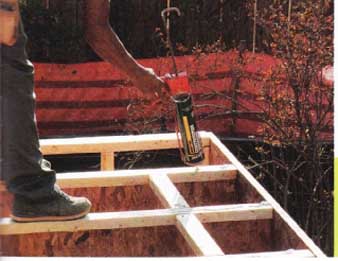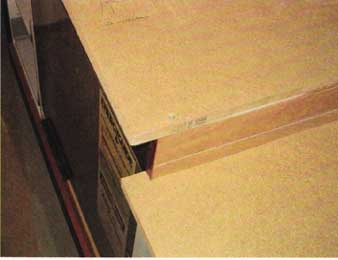AMAZON multi-meters discounts AMAZON oscilloscope discounts
Indoor air quality is the sleeping giant of the homebuilding industry. That’s because we know something isn’t right about many of the materials we use, but we’re not quite sure what that means or what the implications are. Most of us, for example, have probably used construction adhesive that comes with a label warning that the product can cause nerve and liver damage, even cancer. But we use it anyway, year after year. It’s like our attitude about smog: If you can’t see it from your front porch, why worry about it?
The Green Factor: Maintaining high indoor air quality, an important component of green building, becomes more complex as the number of chemicals used in household furnishings, products, and building materials continues to expand. As houses become tighter, they are more likely to trap chemicals in the air we breathe In fact air quality can be much lower inside where we spend almost all of our time than it is outside. Green-building strategies for improving air quality include appropriate mechanical ventilation and air filtration. It should also include a broader appreciation for the kind of hazards we may encounter and efforts to eliminate them when possible: • Commonly-found chemicals: hazards such as solvents, paints, vehicle exhaust, certain adhesives, pesticides -- as well as ordinary households products and building materials that off-gas formaldehyde and other potentially hazardous compounds • Radon, a naturally occurring gas, is the second most frequent cause of lung cancer in the U S after smoking |

Non-toxic adhesives are readily available and make
a greener choice than those containing volatile organic compounds.
It’s not just adhesives, paint, and solvents used to build a house that pose potential health risks. There are many materials that become part of a finished house—paneling, furniture, carpet—that contain toxic compounds threatening the health and well-being of the people who live there. Other contaminants, ranging from pet dander to mold and dust mites, may seem more benign because they are natural in their origin. Not so.
Indoor air quality is an important leg of green building not only because there are so many potential airborne threats to health but also because we spend so much time inside in contact with them. We know frighteningly little about many of the chemicals we come in to contact with in our own homes or how we should build to cope with them. Much of what we do know is from our European counterparts. They have been building tight homes for 25 years and were the first to identify indoor air quality as a problem. When homes were very leaky it wasn’t an issue—all that free ventilation got rid of toxins in the house. But as homes got tighter and more synthetic chemicals replaced natural products, the impact of poor indoor air quality became more apparent.
As short on answers as we sometimes seem to be, we do know more today than we did a decade ago. Increasingly, the public health community is pointing the finger at homes and schools as the source of health problems, particularly among children. When Scientific American reports that of all the chemicals regulated by the U.S. Environmental Protection Agency only two are more prevalent outdoors than indoors, it seems we have a problem.
FYI: The EPA estimates as many as 15 percent of Americans are allergic to their own homes. According to the New England Journal of Medicine, 40 percent of children born today will suffer some form of respiratory disease.

This countertop substrate is wheat board, a particleboard
replacement made from rapidly renewable resources and without the urea-formaldehyde
binders that would add contaminants to indoor air.
Prev.: Green Building Basics
Next:
Setting Standards for Exposure